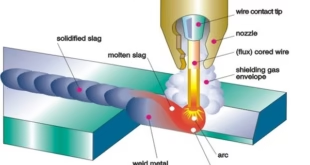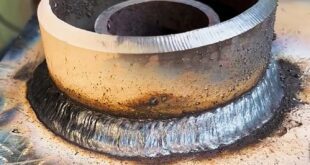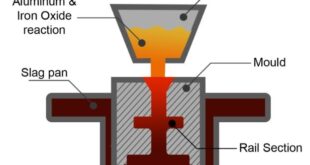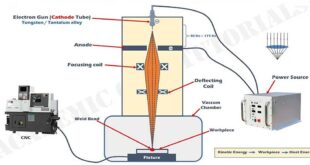What is Girth Welding?
Welding is a cornerstone of many industries, from construction to manufacturing, and it’s hard to imagine a world without it. One specific technique that’s incredibly vital, especially in industries like oil and gas, is girth welding. But what exactly is girth welding, and why is it so important? Let’s dive into this fascinating topic and explore everything there is to know about it.

What is Girth Welding?
Girth welding refers to the process of welding around the circumference of cylindrical objects, such as pipes, tanks, or vessels. The term “girth” essentially means the measurement around something—in this case, the circular joints that need to be welded. This welding method ensures that the structural integrity of cylindrical components is maintained, even under extreme pressures or environmental conditions.
Applications of Girth Welding
Girth welding plays a pivotal role in several industries. Here are some of its key applications:
- Oil and Gas Pipelines: Girth welding is critical for joining pipeline sections that transport oil, gas, and other fluids over long distances.
- Storage Tanks and Pressure Vessels: Large cylindrical tanks used for storing liquids and gases require strong and reliable girth welds.
- Offshore Structures: Offshore oil rigs and platforms rely on girth welding for assembling and maintaining structural components.
- Other Industries: Girth welding is also used in the construction of boilers, nuclear reactors, and large industrial machinery.
Types of Girth Welding Processes
There are several approaches to girth welding, each with its advantages and specific applications:
- Manual Welding: Traditional and cost-effective, but highly dependent on the skill of the welder.
- Semi-Automatic Welding: Combines manual guidance with machine assistance, improving precision and speed.
- Automated Welding Systems: Fully automated solutions that ensure consistency and are ideal for large-scale projects.
Key Welding Techniques in Girth Welding
Several welding techniques are commonly used for girth welding:
- Shielded Metal Arc Welding (SMAW): A versatile method suitable for outdoor applications.
- Gas Tungsten Arc Welding (GTAW): Offers high precision, making it ideal for critical joints.
- Submerged Arc Welding (SAW): Efficient for large-scale operations due to its high deposition rate.
Equipment Used in Girth Welding
Girth welding requires specialized equipment to achieve optimal results:
- Welding Machines: Essential for generating the necessary heat to fuse materials.
- Clamps and Fixtures: Keep the components securely in place during welding.
- Inspection Tools: Ensure the welds meet quality and safety standards.
Challenges in Girth Welding
Despite its importance, girth welding comes with its own set of challenges:
- Welding Defects: Issues like porosity, cracks, and incomplete fusion can compromise the weld’s strength.
- Environmental Factors: Extreme temperatures, wind, and moisture can affect weld quality.
- Maintaining Consistency: Achieving uniform circular welds is a complex task, especially for large-diameter pipes.
Common Defects in Girth Welding
Understanding the potential defects is key to mitigating them:
- Porosity: Caused by trapped gas pockets within the weld.
- Cracks: Often due to rapid cooling or stress during welding.
- Incomplete Fusion: When the weld fails to fully bond with the base material.
Importance of Quality Control in Girth Welding
Quality control is critical in girth welding to ensure safety and durability:
- Inspection Techniques: Visual inspections, ultrasonic testing, and radiographic testing help identify flaws.
- Non-Destructive Testing (NDT): Allows for thorough inspection without damaging the weld.
Safety Measures in Girth Welding
Safety is paramount in any welding process, including girth welding:
- Protective Gear: Welders must use helmets, gloves, and fire-resistant clothing.
- Proper Handling: Ensuring equipment is in good condition and used correctly.
- Mitigating Risks: Implementing safety protocols in hazardous environments like offshore platforms.
FAQs
What is girth welding used for?
Girth welding is primarily used for joining cylindrical structures like pipelines, tanks, and pressure vessels, ensuring their structural integrity.
What are the common challenges faced during girth welding?
Common challenges include welding defects, environmental factors, and maintaining consistency in circular welds.
How is automation changing girth welding?
Automation is enhancing precision, speed, and consistency, making girth welding more efficient and reliable.
What are the most common defects in girth welding, and how can they be avoided?
Defects like porosity, cracks, and incomplete fusion can be avoided with proper technique, equipment, and quality control.
Why is quality control crucial in girth welding?
Quality control ensures the safety, durability, and performance of welded structures, preventing failures and accidents.
Conclusion
Girth welding is an indispensable technique in industries requiring strong, durable joints for cylindrical structures. From pipelines to pressure vessels, its applications are vast and crucial. By embracing advancements in technology and prioritizing quality control, girth welding continues to evolve, ensuring safety and reliability in critical operations.
 Welding of Welders All about Welding and Welders
Welding of Welders All about Welding and Welders



